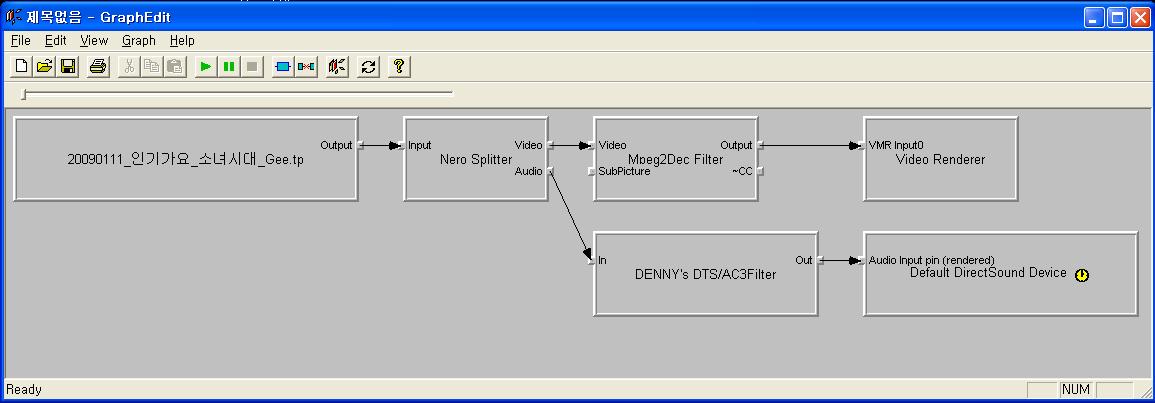최신 Wiznet 사의 W5500 칩을 테스트 하던중에 발견.
최신드라이버 파일이라고 잘 정리해 둔것을 보고 써보던중에 발견함.
uint8_t getIMR(void)
{
return WIZCHIP_READ(IMRw); // 이렇게 수정함.
}
uint8_t getIMR(void)
{
return WIZCHIP_READ(IMRw);
}
#define IMRw (_W5500_IO_BASE_ + (0x0016 << 8) + (WIZCHIP_CREG_BLOCK << 3))
RCR 도 마찬가지~
D:\test\Libraries\CMSIS\Core\CM3\stm32f10x.h 2861 #define EXTI_IMR_MR10 ((uint32_t)0x00000400) /*!< Interrupt Mask on line 10 */
D:\test\Libraries\CMSIS\Core\CM3\stm32f10x.h 2862 #define EXTI_IMR_MR11 ((uint32_t)0x00000800) /*!< Interrupt Mask on line 11 */
D:\test\Libraries\CMSIS\Core\CM3\stm32f10x.h 2863 #define EXTI_IMR_MR12 ((uint32_t)0x00001000) /*!< Interrupt Mask on line 12 */
D:\test\Libraries\CMSIS\Core\CM3\stm32f10x.h 2864 #define EXTI_IMR_MR13 ((uint32_t)0x00002000) /*!< Interrupt Mask on line 13 */
D:\test\Libraries\CMSIS\Core\CM3\stm32f10x.h 2865 #define EXTI_IMR_MR14 ((uint32_t)0x00004000) /*!< Interrupt Mask on line 14 */
D:\test\Libraries\CMSIS\Core\CM3\stm32f10x.h 2866 #define EXTI_IMR_MR15 ((uint32_t)0x00008000) /*!< Interrupt Mask on line 15 */
D:\test\Libraries\CMSIS\Core\CM3\stm32f10x.h 2867 #define EXTI_IMR_MR16 ((uint32_t)0x00010000) /*!< Interrupt Mask on line 16 */
D:\test\Libraries\CMSIS\Core\CM3\stm32f10x.h 2868 #define EXTI_IMR_MR17 ((uint32_t)0x00020000) /*!< Interrupt Mask on line 17 */
D:\test\Libraries\CMSIS\Core\CM3\stm32f10x.h 2869 #define EXTI_IMR_MR18 ((uint32_t)0x00040000) /*!< Interrupt Mask on line 18 */
D:\test\Libraries\CMSIS\Core\CM3\stm32f10x.h 2870 #define EXTI_IMR_MR19 ((uint32_t)0x00080000) /*!< Interrupt Mask on line 19 */
D:\test\Libraries\CMSIS\Core\CM3\stm32f10x.h 7511 #define ETH_MACIMR_TSTIM ((uint32_t)0x00000200) /* Time stamp trigger interrupt mask */
D:\test\Libraries\CMSIS\Core\CM3\stm32f10x.h 7512 #define ETH_MACIMR_PMTIM ((uint32_t)0x00000008) /* PMT interrupt mask */
D:\test\Libraries\CMSIS\Core\CM3\stm32f10x.h 7586 #define ETH_MMCRIMR_RGUFM ((uint32_t)0x00020000) /* Mask the interrupt when Rx good unicast frames counter reaches half the maximum value */
D:\test\Libraries\CMSIS\Core\CM3\stm32f10x.h 7587 #define ETH_MMCRIMR_RFAEM ((uint32_t)0x00000040) /* Mask the interrupt when when Rx alignment error counter reaches half the maximum value */
D:\test\Libraries\CMSIS\Core\CM3\stm32f10x.h 7588 #define ETH_MMCRIMR_RFCEM ((uint32_t)0x00000020) /* Mask the interrupt when Rx crc error counter reaches half the maximum value */
D:\test\Libraries\CMSIS\Core\CM3\stm32f10x.h 7591 #define ETH_MMCTIMR_TGFM ((uint32_t)0x00200000) /* Mask the interrupt when Tx good frame count counter reaches half the maximum value */
D:\test\Libraries\CMSIS\Core\CM3\stm32f10x.h 7592 #define ETH_MMCTIMR_TGFMSCM ((uint32_t)0x00008000) /* Mask the interrupt when Tx good multi col counter reaches half the maximum value */
D:\test\Libraries\CMSIS\Core\CM3\stm32f10x.h 7593 #define ETH_MMCTIMR_TGFSCM ((uint32_t)0x00004000) /* Mask the interrupt when Tx good single col counter reaches half the maximum value */
D:\test\Libraries\STM32F10x_StdPeriph_Driver\src\stm32f10x_exti.c 86 EXTI->IMR = 0x00000000;
D:\test\Libraries\STM32F10x_StdPeriph_Driver\src\stm32f10x_exti.c 115 EXTI->IMR &= ~EXTI_InitStruct->EXTI_Line;
D:\test\Libraries\STM32F10x_StdPeriph_Driver\src\stm32f10x_exti.c 230 enablestatus = EXTI->IMR & EXTI_Line;
D:\test\Libraries\W5500_iolibrary_v100\ethernet\w5500\netctrl.c 82 setIMR((uint8_t)(option_value&0x00FF)); // set interrupt mask.
D:\test\Libraries\W5500_iolibrary_v100\ethernet\w5500\w5500.c 373 void setIMR(uint8_t imr)
D:\test\Libraries\W5500_iolibrary_v100\ethernet\w5500\w5500.c 373 void setIMR(uint8_t imr)
D:\test\Libraries\W5500_iolibrary_v100\ethernet\w5500\w5500.c 375 WIZCHIP_WRITE(IMR, imr);
D:\test\Libraries\W5500_iolibrary_v100\ethernet\w5500\w5500.c 375 WIZCHIP_WRITE(IMR, imr);
D:\test\Libraries\W5500_iolibrary_v100\ethernet\w5500\w5500.c 378 uint8_t getIMR(void)
D:\test\Libraries\W5500_iolibrary_v100\ethernet\w5500\w5500.c 380 return WIZCHIP_READ(IMR);
D:\test\Libraries\W5500_iolibrary_v100\ethernet\w5500\w5500.c 393 void setSIMR(uint8_t simr)
D:\test\Libraries\W5500_iolibrary_v100\ethernet\w5500\w5500.c 393 void setSIMR(uint8_t simr)
D:\test\Libraries\W5500_iolibrary_v100\ethernet\w5500\w5500.c 395 WIZCHIP_WRITE(SIMR, simr);
D:\test\Libraries\W5500_iolibrary_v100\ethernet\w5500\w5500.c 395 WIZCHIP_WRITE(SIMR, simr);
D:\test\Libraries\W5500_iolibrary_v100\ethernet\w5500\w5500.c 398 uint8_t getSIMR(void)
D:\test\Libraries\W5500_iolibrary_v100\ethernet\w5500\w5500.c 400 return WIZCHIP_READ(SIMR);
D:\test\Libraries\W5500_iolibrary_v100\ethernet\w5500\w5500.c 547 void setSn_IMR(uint8_t sn, uint8_t imr)
D:\test\Libraries\W5500_iolibrary_v100\ethernet\w5500\w5500.c 547 void setSn_IMR(uint8_t sn, uint8_t imr)
D:\test\Libraries\W5500_iolibrary_v100\ethernet\w5500\w5500.c 549 WIZCHIP_WRITE(Sn_IMR(sn), (imr & 0xF0));
D:\test\Libraries\W5500_iolibrary_v100\ethernet\w5500\w5500.c 549 WIZCHIP_WRITE(Sn_IMR(sn), (imr & 0xF0));



 위로 가기
위로 가기


.gif)
.gif)
.gif)
.gif)
.gif)
.gif)
.gif)

